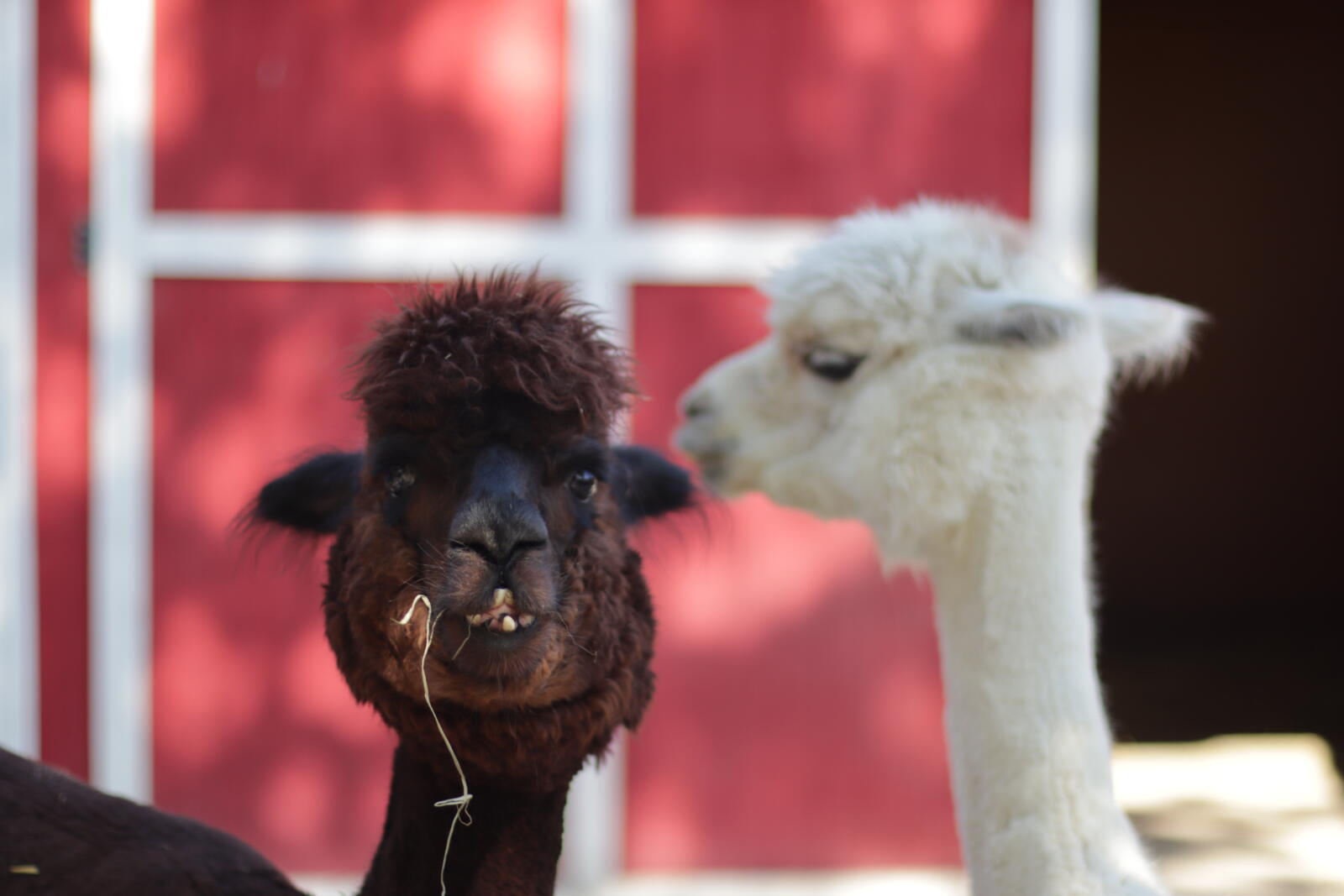Alpaca
Is that a llama? No, it's an alpaca.
Alpacas and llamas are related though. They are also related to camels. The difference between them all is mostly size. At Chattanooga Zoo, you can visit with our Huancaya alpacas.


There are no wild alpacas. Alpacas are domesticated versions of vicuñas. Alpacas are thought to have been domesticated more than 6,000 years ago by the Incas, who raised them for their prized fleece. At the time, alpaca fiber was reserved exclusively for the elite and noble due to its high quality and versatility.
- There are two types of alpacas: suri and huacaya. Suri alpacas are covered with fiber that overgrows to form dreadlocks. Huacaya alpacas are covered with a shaggy, bushy, and waved coat, like a teddy bear. Huacaya alpacas make up 90% of all alpacas in North America. While llamas are used as pack animals, alpacas are raised mainly for their soft wool.
Alpacas are very adaptable and have been exported all over the world, including the United States, New Zealand, Australia and the Netherlands, so their "habitat" is often farmland. Still, 99% of the world population of alpacas is found in South America, specifically, Peru.

______________________________________________________________________________________________________________________________________________
My, what big teeth you have!

Alpacas don't have teeth on the top-front of their mouths. This gives them the appearance of having an underbite.
__________________________________________________________________________________
Alpaca numbers
Presently, alpacas are not included in the International Union for Conservation of Nature Red List because the overall population is not threatened or endangered. This is partly due to human care as well as them not living in the wild. There are about 3.5 million individuals around the world, 87% of which live in Peru and 9.5% in Bolivia.








